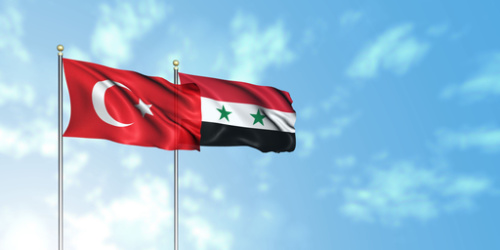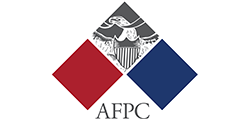
BACKGROUND: On June 1, 2022, President Recep Tayyip Erdoğan signaled that a new Turkish military operation in northern Syria was imminent. Speaking before the parliamentary group of his ruling Justice and Development Party (AKP), Erdoğan declared “We are entering a new phase of our decision to create a 30-kilometer deep safe zone. We are clearing Tal Rifaat and Manbij of terrorists.” The two regions are keys to Turkey consolidating its control over the section of Turkey’s self-declared safe zone in northern Syria that lies west of the Euphrates River. Ankara’s stated ambition is to a create a Turkish-controlled safe zone extending 20 miles (32 km) deep from the Turkish border along a 285-mile (460 km) wide swath of northeastern Syria on both sides of the Euphrates.
The territories that Turkey ostensibly controls from its four military operations comprise an area roughly 80% the size of Lebanon. Ankara’s immediate objective is to eradicate from northern Syria the Kurdish forces of the People’s Protection Units (YPG), an affiliate of the Kurdistan Workers’ Party (PKK), which has been designated as a terrorist organization by Turkey, the United States, and the European Union. Since the YPG comprises the bulk of the Syrian Democratic Forces (SDF) that defend the Autonomous Administration in North and East Syria (AANES), Turkey’s campaign against the YPG entails creating its safe zone by taking control of territory administered by the AANES. In the process, the Turkish administration in these areas is creating something more than a safe zone, in the strictest sense. Turkey’s policies are engendering a socio-economic and cultural transformation in these areas, setting the stage for a long-term Turkish presence and an increasingly de facto functional incorporation into the Turkish state.
The region of northern Syria, including the city of Aleppo, was defined as part of the core territory of Turkey in the Mîsâk-ı Millî (‘National Pact’) map promulgated by the last Ottoman parliament. In his speeches on Turkey’s ‘spiritual borders’, Erdoğan explictly includes the geography of northern Syria. Expanding Turkey’s presence in northern Syria is popular among the supporters of the extreme nationalist parties, whom Erdoğan and his AKP will need to maintain in a ruling coalition in the face of national elections to be held within the next 11 months.
Yet in many aspects, Turkey is already running the areas of northern Syria under its contol as a Turkish territory. Turkey’s Ministry of the Interior has overseen the appointment of district governors (kaymakam), chiefs of police (emniyet müdürü) and gendarme commanders in northern Syria. The vice governors of Turkey’s neighboring Hatay, Gaziantep and Şanlıurfa provinces are responsible for the coordination of the governing and police activities.
Turkey pays the salaries of Syrian security forces and civil servants, who coordinate their work with the appropriate corresponding ministries in Ankara. The Turkish Red Crescent pays the salaries of an estimated 2,770 healthcare personnel working in nine hospitals and 31 healthcare centers across Syria. The Turkish Lira has become the main currency of the safe zone and the many branches of the Turkish Postal Service established in the different safe zone areas conduct banking services.
Turkey’s education initiatives are even more far-reaching. Turkey’s Gaziantep University has established three separate faculties in northern Syria – a Faculty of Islamic Sciences in Azaz, a Faculty of Education in Afrin, and a Faculty of Economics and Administrative Sciences in Al-Bab, which collectively have enrolled approximately 1,300 students. The university is looking to create a new campus in the region. Turkey’s only higher educational institution for health sciences, the Sağlık Bilimerli Üniversitesi, operates a medical school in the traditionally Turkmen-dominated town of Al-Rai (known in Turkish as Çobanbey) located between Azaz and Manbij. Turkish is the medical school’s language of instruction and students must have at least a B2-level of Turkish to attend. Turkey is also creating an industrial zone in Al-Rai that will employ 60,000 of the region’s residents.
Turkish language learning is made available across the Turkish controlled parts of northern Syria through the branches of the Yunus Emre Institute. Besides promoting better awareness of Turkish culture, the Azaz branch of the institute established in 2020 teaches Turkish to facilitate the diffusion of the Turkish language among the populace and the employees of the civil administration. The Azaz branch’s first graduates were a cohort of 300 Syrian teachers to teach the Turkish language in schools in Azaz as well as Mare, Al-Rai, Afrin, Tel Abyad, and Ras al-Ayn. A new Yunus Emre Institute branch was established in Afrin in September 2021. Overall, the institute provides Turkish language instruction to over 110,000 students living in the Turkish-controlled areas of northern Syria. Similarly the Bubulzade Foundation and the Presidency for Turks Abroad and Related Communities have built centers in Afrin, Azaz, Al-Bab, and Jarabulus to provide Turkish language classes and vocational training to thousands of Syrians.
The expansive role played by the Turkish Islamic charity organization İHH, known for its ties to the Syrian Muslim Brotherhood and related groups outlawed by Cairo, Abu Dhabi, and Riyadh is problematic. İHH was the principal antagonist to Israel during the 2010 Mavi Marmara incident, which precipitated the fraying of Turkey-Israel relations that were only fully restored on August 17, 2022. The organization now plays a central role in distributing food, clothing, and medicine in the areas of Syria under Turkey’s control. In Sawran, about 7 km northeast of Tal Rifaat the İHH and the Qatar Charity are undertaking a joint $7.5 million project to build Al Amal City to provide homes, schools, and municipal services to upwards of 9,000 people.
CONCLUSIONS: While Ankara may be able to convince Egypt, Israel, the UAE, and Saudi Arabia that a Turkish operation confined to the region of Tal Rifaat would serve their strategic interest in limiting Iran’s influence, Erdoğan’s government also needs to convince these actors that expanded Turkish control in Syria will not empower jihadist forces or Islamist groups aligned with Muslim Brotherhood.
Having already achieved diplomatic breakthroughs with its Middle Eastern neighbors, even developing some new strategic ties with the UAE and Israel, Turkey may be able to overcome the concerns about Turkey’s long-term presence in northern Syria. With regional assent to a Turkish operation confined to Tal Rifaat that would undermine Iran’s influence in the Aleppo region but not cripple the SDF, Washington may also withhold its strong objection. Moscow is equally not keen to see the expansion of Iran’s influence at its own expense. On August 5, 2022, Erdoğan met Russian President Vladimir Putin in the Russian Black Sea city of Sochi. While the meeting ostensibly focused on energy cooperation, the presence of Ramzan Kadyrov, the Chechen leader who has sent forces under his command to both Syria and Ukraine, suggests a wider agenda. For Russia, which has learned how to manage its competition with Turkey to mutual benefit in operational theaters from Libya to the South Caucasus, Turkish control of Tal Rifaat could form the basis of a new quid pro quo, but one whose price could ultimately be paid in the coin of a parallel acceptance of Russian control in sections of eastern Ukraine.
AUTHOR'S BIO: Prof. Michaël Tanchum teaches international relations of the Middle East and North Africa at the Universidad de Navarra, Spain. He is an Associate Senior Policy Fellow at the European Council on Foreign Relations (ECFR) and at the Austrian Institute for European and Security Studies (AIES). He is a non-resident fellow in the Economics and Energy Program at the Middle East Institute in Washington, D.C. and also holds fellow positions at the Centre for Strategic Policy Implementation at Başkent University in Ankara, Turkey (Başkent-SAM) as well as at the Truman Research Institute for the Advancement of Peace, the Hebrew University, Israel. Find Michaël Tanchum on Twitter at @michaeltanchum.



